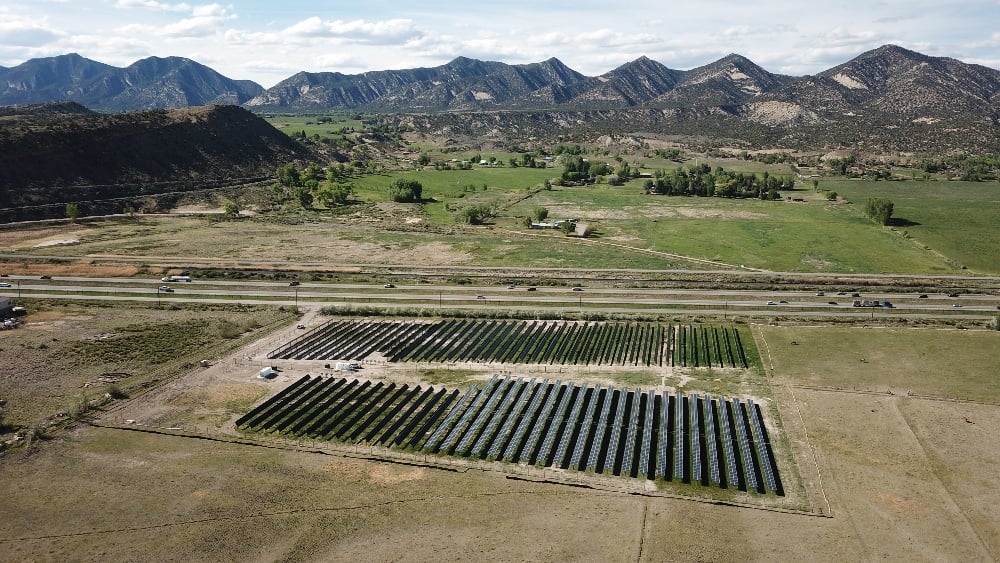Revolutionizing Sustainable Living: the Benefits of Community Solar Farms
June 15, 2023

Living in a small town has its perks – you get to know everyone in your community, enjoy a more relaxed pace of life, and witness the beauty of nature. However, when it comes to accessing the benefits of clean energy, small towns are often left behind due to their size and lack of resources. Fortunately, community solar farms – also known as “distributed solar” or “shared solar gardens” – are revolutionizing the way hardworking American households and businesses can access renewable energy and achieve energy bill savings, all the while supporting their local economy, energy grid infrastructure improvements, and an all around healthier environment. Keep reading to learn more about the many benefits that community solar farms offer.
Subscribers Save on Monthly Utility Bills
Households, schools, local businesses, and other entities can “subscribe” to the solar array and save on their monthly utility bills without installing equipment directly on their rooftops. (Click here to learn more about how this works.) Even if you choose not to subscribe to the community solar farm, your community will still experience tangible economic benefits.
Economic Growth, Job Creation, and Local Development
Community solar projects bring significant economic benefits to your town and create well-paying job opportunities in your community, including jobs in construction, engineering, operations and maintenance, and more. This also has downstream effects; workers frequent local restaurants, hotels, and gas stations during the construction of a new project, supporting main street businesses. Additionally, solar farms generate hundreds of thousands of dollars of property taxes over their operational lives, generating a new stream of funds for your schools, libraries and roads.
Local Farmers Unlock a New Revenue Stream
Land lease payments can be especially helpful for farmers struggling with low crop yields caused by extreme weather patterns, climate disasters, trade wars, and the rising cost of agricultural necessities like fertilizer. Solar land leases allow these farmers to maintain ownership of their property and gain a reliable income stream for 20 to 40 years – as an added bonus, this gives barren land plenty of time to rejuvenate. Developers, such as Pivot Energy, are extremely diligent in determining where to build a community solar project, considering a number of variables to maximize the economic and environmental potential.
Resilient Grids with Enhanced Infrastructure
Community solar arrays help enhance the resilience of local electric grids. Community solar farms fall into a category of development called “distributed generation,” which can offer additional resiliency compared to centralized power plants that are often developed far away from the customers they are supplying. With solar farms, power is more distributed, meaning it comes from multiple sources spread over an area. This offers resiliency in the face of climate disasters and severe weather. Additionally, when a community solar project is permitted, the solar developer often pays to upgrade the local electric lines and substation to accommodate the facility – installing smart inverters and other grid-management devices.
Carbon Reduction and Improved Public Health
Switching to solar energy from fossil fuels is one of the most significant steps a town can take to reduce its carbon footprint. Renewable energy projects decrease the negative environmental impact by reducing the need for procuring energy that produces greenhouse gas (GHG) emissions. Lowering GHG emissions can improve public health by reducing exposure to the pollutants associated with fossil fuel extraction and power generation. Opting for clean energy facilities over fossil fuel infrastructure is a net positive for public health.
Cultivating Biodiversity and Preserving Pollinators
On a more micro-scale, solar gardens can even be designed to provide refuge for local plants and animals, particularly pollinators like bees and butterflies which are facing dwindling numbers. With this in mind, many solar farms are developed to allow for the growth of local wildflowers on the land underneath them, creating a healthy ecosystem that supports pollinators and the survival of heirloom varieties of native plants. (Click here to learn more about how we combine solar and agricultural land uses.)
Learning Sustainable Practices
The educational value of community solar projects is also noteworthy. Solar arrays can serve as educational tools for students and community members to learn about renewable energy, energy conservation, climate change, and sustainable living practices. Pivot financially supports multiple programs that provide educational and career development opportunities. These funds facilitate opportunities for students to obtain hands-on experience in solar and sustainable energy, and host tours of local solar gardens in Colorado.
Embrace the Power of Community Solar
The news of a community solar array being built in your town should have you feeling excited, as it’ll have a significant impact on your community and the environment. By participating in the project, you can save money on your energy bills, reduce your carbon footprint, and contribute to your community's economic development.
Want to know if your land qualifies? Click here!
Don’t be afraid to reach out if you have any community solar related questions!

.jpg?width=123&name=Angie%20Agrivoltaics%20Award%20(HQ).jpg)


.jpg?width=400&name=Angie%20Agrivoltaics%20Award%20(HQ).jpg)
